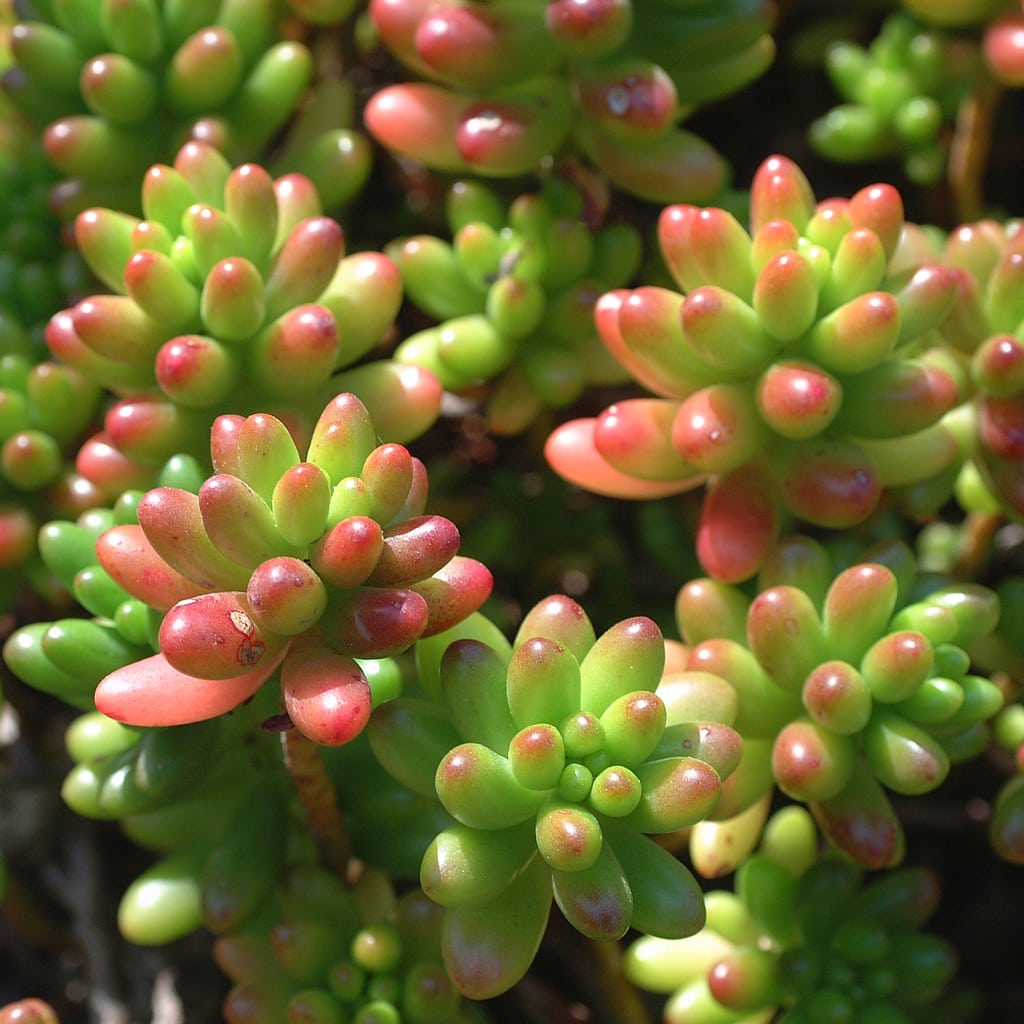Caring For Jelly Bean Plants: How To Grow A Sedum Jelly Bean Plant


Succulent growers love the sedum jelly bean plant (Sedum rubrotinctum). Colorful chubby, little red-tipped leaves that look like jelly beans make it a favorite. It is sometimes called pork-n-beans because the leaves sometimes turn bronze in summer. Others refer to it as Christmas cheer. Whatever you call it, jelly bean sedums make for an unusual plant in an arrangement or in a pot by itself.
About Jelly Bean Sedums
Jelly bean plant facts indicate this plant is a cross of Sedum pachyphyllum and Sedum stahlii, As such, it’s another candidate for neglect and does best without too much attention. Six- to eight-inch (15-20 cm.) stems grow upward and lean when leaves weigh it down. Small yellow flowers appear abundantly in winter to spring during the early years of growth.
Planting and Caring for Jelly Bean Plants
Grow the sedum jelly bean plant in containers or plant it in the ground. Those in areas with cold winters might grow it as an annual or dig up and transplant into pots in autumn. Sedum is easy to plant, in most cases burying a stem is all you need to get it started. Avoid watering for a week or two after planting. Sedum jelly bean plant needs a sunny spot to maintain colorful leaves. Sedum varieties often grow in areas of the landscape where nothing else survives because of hot, dry conditions. You can also use the jellybean plant in partially shaded areas for a pop of color, just plant someplace where a few hours of the sun can reach the plant. In the hottest climates, this succulent needs some shade in summer. Jelly bean sedums turn green all over when not enough light reaches them. Succulent jelly bean care involves limited watering. If rain is available to the plant, additional water is probably not needed. When possible, allow an extended dry period between waterings. Grow this specimen in fast-draining soil mixes, such as sand, perlite, or pumice mixed with peat and a limited amount of potting soil. Pests are rare on jelly bean plant. Keep an eye for mealybugs and scale, and if you see them, remove with an alcohol-soaked Q-tip. Fungus gnats are usually a sign that the soil is too damp, so lighten up on watering.
Gardening tips, videos, info and more delivered right to your inbox!
Sign up for the Gardening Know How newsletter today and receive a free copy of our e-book "How to Grow Delicious Tomatoes".

Becca Badgett was a regular contributor to Gardening Know How for ten years. Co-author of the book How to Grow an EMERGENCY Garden, Becca specializes in succulent and cactus gardening.
-
 Terrifically Tubular Flowers For Hummingbirds: 9 Tube-Flowered Plants To Attract Hummers
Terrifically Tubular Flowers For Hummingbirds: 9 Tube-Flowered Plants To Attract HummersGrowing tubular flowers for hummingbirds helps you create the optimum feeding conditions for your winged friends. Here are nine tubed delights for hummers
By Tonya Barnett
-
 How To Grow Hydroponic Tomatoes For Fresh Indoor Harvests – No Soil Required
How To Grow Hydroponic Tomatoes For Fresh Indoor Harvests – No Soil RequiredLearning how to grow tomatoes in water is easy and allows you to harvest fresh-home-grown produce in every season without any mess.
By Ellen Wells